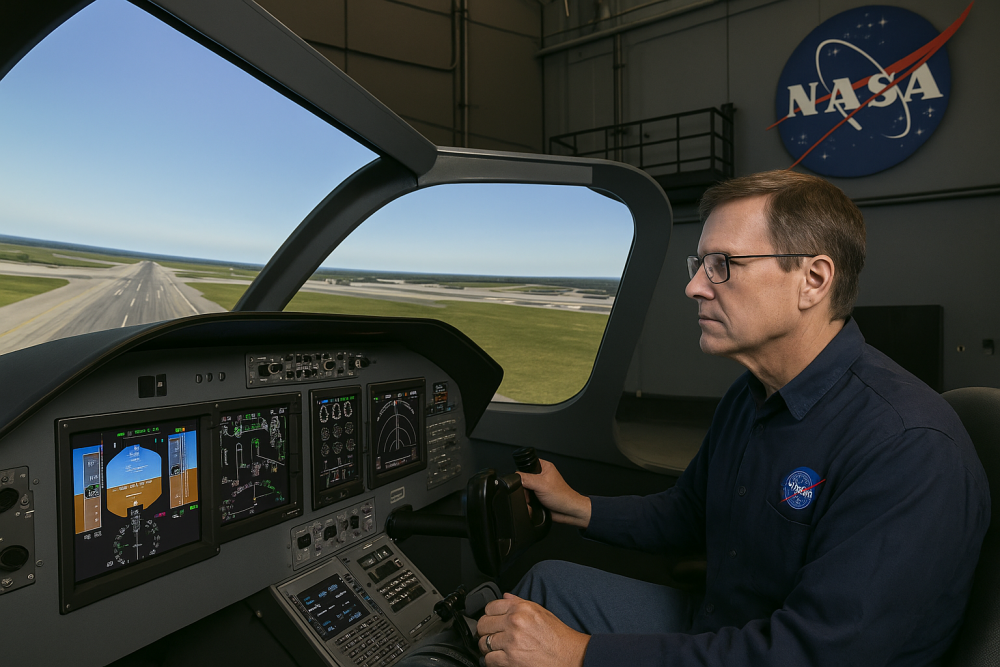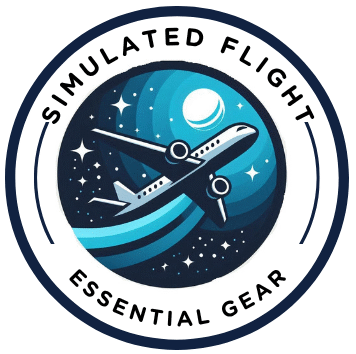
Flight simulation has come a long way, but its roots trace back to simpler devices. Edwin Link, a passionate pioneer, changed training forever when he rolled out the Link Trainer. This invention ultimately paved the way for modern simulation by providing a foundation that no one had imagined possible.
As pilot training needs grew, Curtis-Wright Corp stepped in. Scaling military trainer production to unprecedented heights, they effectively bridged the gap between old school methods and more advanced innovation. Their push ensured that pilots honed their skills using realistic and accessible equipment.
It’s wild to think how we went from clunky, gear-driven boxes to fully immersive digital cockpits. Those early simulators were great for orientation—but today, you’re surrounded by 360-degree weather, complex avionics, and real-time feedback that blurs the line between simulation and reality.
This wasn’t just a tech upgrade—it was a shift in mindset. Pilots, engineers, and educators began to realize the full value of simulation. Every leap—from mechanical levers to pixel-perfect VR—came from a blend of need, curiosity, and a drive to make flying safer, smarter, and more intuitive.
Shaping Aviation’s Future: The Innovators Behind Simulation Breakthroughs

Flight simulation owes much of its progress to daring innovators who bridged analog to digital realms seamlessly. Think of Singer Corp, later CAE Inc, as the pioneers who mastered this transformation. They didn’t just adapt— they ushered in a new age of realistic digital simulations, setting new standards that reshaped training and testing environments.
CAE Inc. then took the baton and sprinted forward. Known today as a global leader, their certified flight simulators have become the gold standard in aviation training worldwide. CAE’s commitment to detail and realism ensures that every simulation session is as close to real life as you can get, bringing pilots closer to perfection with every takeoff, maneuver, and landing.
Meanwhile, Thales Group carved its niche by focusing on military and airline simulation technology. Innovating at every turn, they ensured their systems met the rigorous needs of defense sectors while also catering to commercial aviation demands. Their simulators provide in-depth, actionable experience, helping aviators face both everyday flights and extraordinary challenges with confidence.
Together, these innovators have done more than build better sims—they’ve redefined how pilots train, adapt, and grow. Every advancement sharpens real-world skills and keeps aviation moving forward, both in the clouds and behind the screen.
Breaking Boundaries: Making Flight Simulation Universal

Flight simulation broke free from the confines of professional pilot training and aviation schools thanks to trailblazers like Microsoft. They made simulation accessible for everyone, turning living rooms into cockpits. With the Microsoft Flight Simulator, enthusiasts and budding pilots could experience the thrill of flying planes anywhere in the world, without ever leaving home.
X-Plane, brainchild of Austin Meyer, took a unique approach by introducing blade element theory. This innovation set new standards in flight physics, offering a more realistic experience that accounted for every nuance in aerodynamics. It showed you don’t need to be in the sky to truly feel the forces that pilots deal with.
Bringing professional-level simulation to non-professionals, Redbird Flight Simulations shook up the game. Their FAA-approved sims bridged the gap between general aviation enthusiasts and serious pilot training from home. With more cost-effective and widely available systems, the joys and challenges of flight became accessible to a larger audience, fueling passions and cementing skills alike.
These advancements didn’t just widen access—they democratized flight. Now, anyone with the curiosity and a bit of tech savvy could dive headfirst into simulation, sparking interest in aviation and expanding the community far beyond traditional limits.
👉 Want to build your own flight rig at home? Start here:
Building a DIY Home Cockpit on a Budget
NASA’s Vision: High-Fidelity Simulations for Exploration and Testing

NASA stands at the forefront of high-fidelity simulation, crafting experiences that stretch our understanding of flight. Developing their suite of research simulators, NASA combined cutting-edge technology with an insatiable curiosity to push the boundaries of what simulations could achieve. These simulators don’t just replicate; they explore the nuances of human factor interactions and system responses under various flight conditions.
Focusing on avionics testing, NASA’s high-fidelity simulations enable meticulous trials of new systems, aiding in the seamless transition from concept to application. Important elements like navigation, guidance, and control systems all undergo rigorous testing in these virtual environments before they’re cleared for actual implementation.
NASA’s legacy in simulation is not just about creating tools—it’s about fostering a culture of safety and innovation. By providing invaluable data and insights through their simulators, they empower engineers and pilots to mete out potential risks and craft safer, more efficient machines. It’s this legacy of caution mixed with ambition that continues to propel aviation technology forward.
Incorporating high fidelity and realistic scenarios, NASA’s work helps close the gap between theoretical designs and real-world performance. Their deep dives into simulation technology ensure that even the most ambitious aerospace projects are grounded in solid, tested data. This methodical approach is key to the success and safety of current and future aviation endeavors.
Creating Tomorrow: Ongoing Legacies and Future Innovations
Reflecting on the legacy of our flight simulation pioneers underscores a continuous thread of innovation and determination. The milestones achieved by these trailblazers set a solid foundation for today’s aviation training and research. While the past was marked by foundational shifts, the future shines even brighter with boundless opportunities.
FlightSafety International stands out by consistently providing world-class pilot training. Their simulators serve both new learners and seasoned pilots, ensuring everyone is equipped with the skills needed to handle real-world challenges safely and efficiently. By maintaining an unwavering commitment to quality and realism, they uphold their reputation as a benchmark in aviation training.
The future of flight sim is glowing with possibility. VR and AR are taking immersion to new heights, while AI and machine learning promise smarter, adaptive training that molds itself to each pilot’s strengths and blind spots. We’re not just simulating flights anymore—we’re simulating smarter.
The future of aviation simulations will be shaped by a collaborative community passionately pushing the envelope. Pilots, engineers, and developers intersect their expertise to foster innovations that ensure flight remains safe, efficient, and exhilarating. As we celebrate past achievements, we also look forward to nurturing these innovations that continue to transform the skies.
Bringing it all together, the ongoing commitment of the aviation community illuminates a path forward. Innovation hasn’t stopped; it remains alive and thriving, hinting at new frontiers to explore. Flight simulation constantly evolves, and so does the potential it unlocks both in flight itself and the technology that supports it.
🧭 Ready to Dive In? Here’s What to Do Next
Whether you’re inspired by NASA’s cutting-edge work or simply want to fly from home, there’s never been a better time to explore the world of flight simulation.
✈️ Start here if you’re brand new:
➡️ Getting Started With Flight Simulation: A Step-by-Step Guide
🛠️ Thinking of upgrading your gear or going DIY?
➡️ Building a DIY Home Cockpit on a Budget
